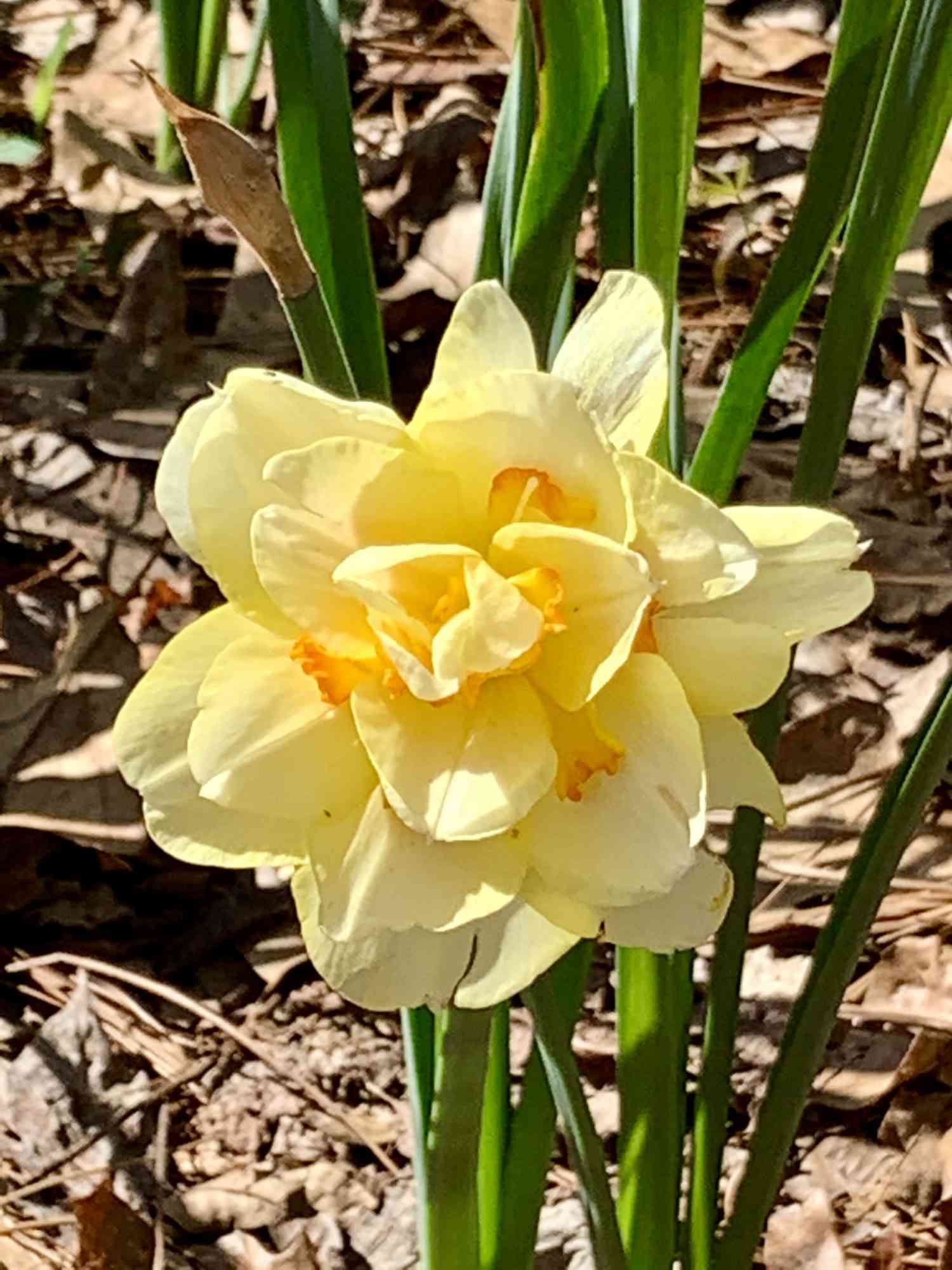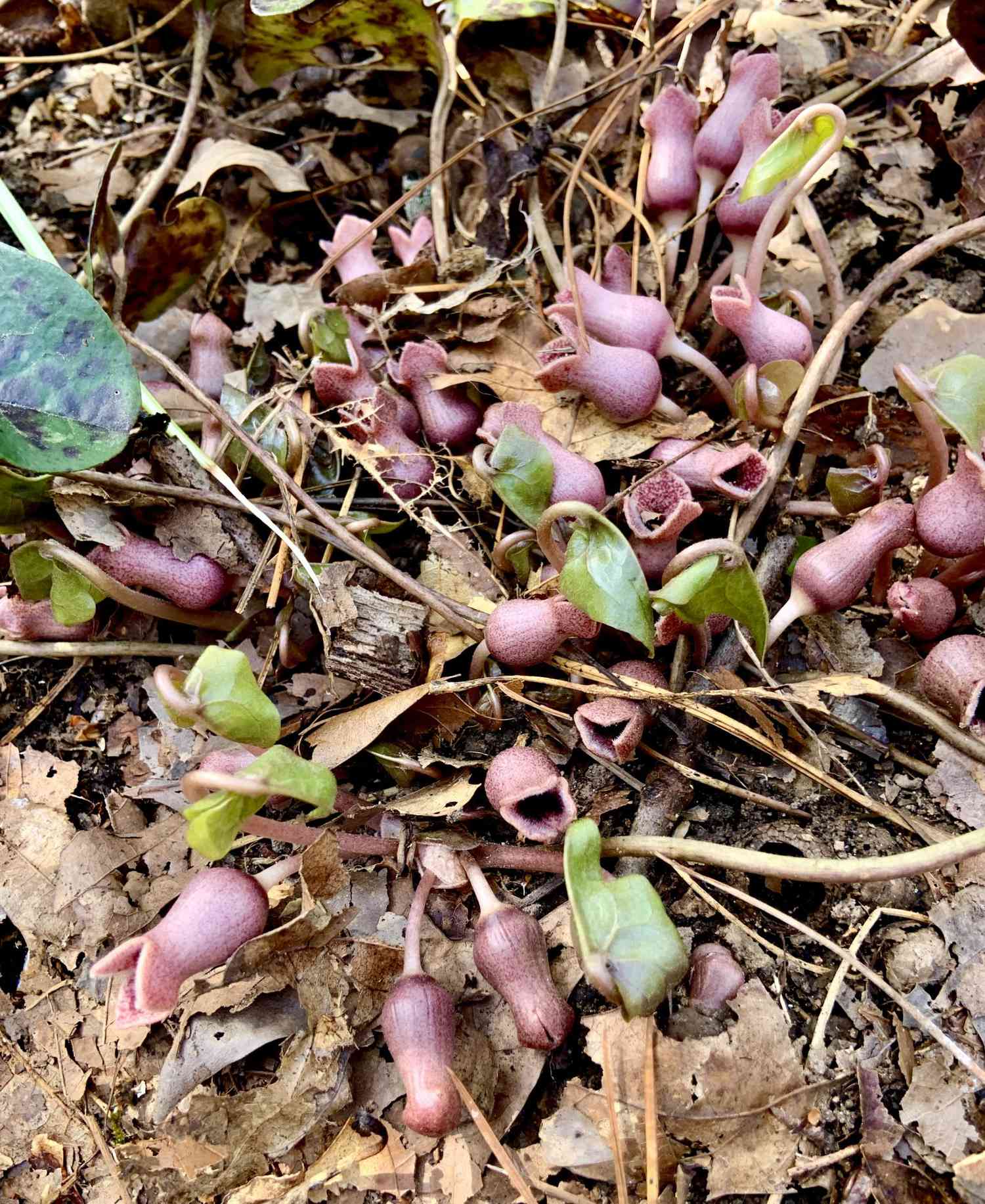To paraphrase Forrest Gump, «A garden is like a box of chocolates. You never know what you’re gonna get.» Like many of you, I have been waiting fitfully, pleadingly, for mild weather to stay and wake up my plants. I’m happy to report the vernal celebration has begun. So let’s talk about the little delight shown above that I just discovered in my woods today.
Native to the Eastern United States, rue anemone (Anemonella thalictroides) is one of my favorite spring wildflowers. You can order it online or find it at garden centers, but mine hitchhiked a ride with a fern I dug at a plant rescue. It forms mounds 6 to 8 inches high and wide topped by showy white, or rarely, pink blossoms. In summer, it dies back to the ground, never to be seen again until the following spring. This lets it survive hot summer droughts. Rue anemone likes light to full shade and fertile, well-drained soil in USDA Zones 4 to 9.

I must confess. My Narcissus display this spring was frankly pathetic. Some daffodils bloomed and others («Barrett Browning,» «Ice Follies,» «Avalon») not at all. I attribute this to our wild swings of weather in February and March, in which we had three straight nights of 15 degrees followed by two days of 80 just as the bulbs were budding. «Tahiti» (shown above) was a trouper, though. It’s my favorite double daffodil for Southern gardens. It blooms a week or two later than the aforementioned failures, so it escaped the crummy weather. Try it in full or part sun in USDA Zones 3 to 8.

Most folks associate Japanese maples (Acer palmatum) with magnificent fall foliage, but don’t overlook the spring foliage. It’s frequently just as pretty. I took this bizarre, artsy shot of my «Crimson Queen» maple (above) yesterday as the leaves were just unfurling in the afternoon sun. Quite some color! Here’s something weird, though. Today is cloudy and cool and the new leaves have retracted back into the buds. It must be a defense against a late frost. Grow Japanese maples in moist, fertile, well-drained soil in full sun in USDA Zones 5 to 7 but give them afternoon shade in USDA Zone 8.

Even if your daffodils poop out this spring, the spring bulb I can always depend on is snowflake (Leucojum aestivum «Gravetye Giant,» above). This classic Southern passalong plant needs little winter chill to bloom. Multiple stems up to 18 inches tall hold white, bell-shaped blooms with a green dot on each petal. Snowflakes quickly multiply into drifts when happy. Grow them in full to part sun in USDA Zones 4 to 9.

Now for some completely different. If you’ve walked through Eastern woods, you’ve undoubtedly trod past colonies of native wild gingers and not noticed. That’s easy to do because these evergreen shade-lovers hug the ground. (Note: These are not related to the culinary gingers native to Asia.) Streaks of silver often splash the glossy, green leaves. Botanists group these plants into two genera, Asarum and Hexastylis. The one above, growing with hostas, ferns, and carex in my shady border, is little brown jug ginger (Hexastylis arifolia), named for odd, jug-shaped, spring blooms that hide under the leaves. It’s easy to grow in acid soil and multiplies readily by seed. Try it in USDA Zones 4 to 8.
Was this page helpful?
Thanks for your feedback!
Tell us why!